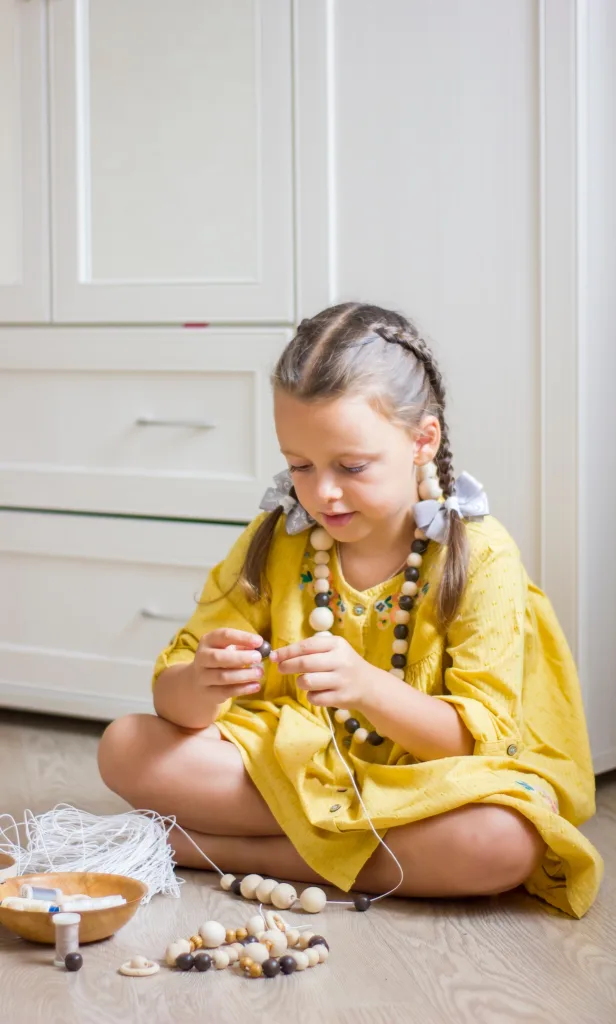After an exhilarating start, Julie’s jewelry design business is off the ground. She has faced and overcome numerous challenges and learned invaluable lessons along the way. Now, she looks to the future. In this final installment of our series, we follow Julie as she makes pivotal decisions and takes strategic steps to ensure the sustainability and growth of her business. She’s not just creating jewelry; she’s building a legacy for herself and her two children, Jaden and Alysha.
If you could go back and give yourself some advice when starting out, what would you say?
Oh man, it’s been a wild ride. If I could go back, I’d probably tell myself to be less scared and just go for it. Like, there’s always gonna be ups and downs, but that’s part of the journey, right? And, I’d tell myself to ask for help sooner. There’s so many peeps who got your back – you just gotta let ’em in. And always, always remember why you started. For me, that’s my kids and my love for creatin’.
Developing a Growth Strategy
Julie realized that while she had a good start, she needed a long-term strategy for growth. Her business couldn’t solely rely on the initial buzz. She was concerned about maintaining sales and expanding her customer base.
Julie decided to set specific, measurable, achievable, relevant, and time-bound (SMART) goals for her business. These included expanding her product line, increasing her social media following, and exploring new marketplaces for selling her jewelry.
She began by engaging more actively on social media, showcasing her creative process and sharing the stories behind her designs. She also introduced limited edition collections inspired by different themes, keeping her product line fresh and enticing.
Julie understood the importance of customer loyalty and began building an email list for a monthly newsletter. This allowed her to keep her customers engaged and informed about upcoming collections, events, and promotions.
Scaling Up and Building a Brand
As the orders started to pile up, Julie found herself struggling to keep up with the demand. She also wanted her brand to have a unique identity that resonated with her values and connected with her customers. However, she didn’t know how to scale her operations efficiently and create a strong brand image.

Julie realized she needed help to scale her business. She reached out to a small business mentor through a local nonprofit that supports entrepreneurs. Her mentor advised her on efficient production techniques and recommended she look into hiring part-time help for packaging and shipping.
One of the tips Julie’s mentor shared was to create a ‘brand story’ that would be the core of her marketing strategy. Julie spent time reflecting on what her jewelry meant to her and how it had played a significant role in her journey. She created a brand story centered around ‘Empowerment Through Creativity’ and decided her brand would stand for supporting creativity and independent artists.
To learn more about branding, Julie took an online course on brand development. Through the course, she learned the importance of having a consistent visual identity. She hired a graphic designer to create a logo and packaging that reflected the essence of her brand story.
For scaling production, Julie contacted a local community center and collaborated with them to organize jewelry-making workshops. She then offered part-time positions to some of the workshop attendees who showed potential. This not only helped her in managing her production but also allowed her to give back to her community by empowering others with skills and employment.
Planning for the Future: Laying the Foundation for Sustainable Growth
As her business started to take off, Julie realized the importance of long-term planning. However, the unpredictability of demand, along with managing the various aspects of her business, left her overwhelmed. She wanted to ensure that her business would continue to grow sustainably and that she was prepared for potential challenges.
Julie recognized that having a solid business plan wasn’t just a one-time thing. It required constant reevaluation and adjustments according to market conditions. She decided to set aside time every quarter to review her business plan and make necessary adjustments.
Julie also decided to diversify her income streams. While her pop-up shops and festivals were doing well, she wanted to ensure that she had other revenue streams in case of unexpected circumstances (like weather affecting an outdoor festival). She decided to expand her online presence by selling on multiple platforms and looking into collaborations with other artists and brands.
She also realized the importance of building a loyal customer base. Julie started a monthly newsletter where she shared updates about her business, upcoming events, and even some personal stories. This allowed her to connect with her customers on a deeper level.
Lastly, Julie knew she needed a financial cushion for her business. She opened a separate business savings account and made it a practice to deposit a fixed percentage of her monthly profits. This fund would be used only in case of emergencies or significant business investments.
Seeing the importance of giving back, Julie also started a small foundation under her brand, where a portion of the profits would go toward art education in underprivileged communities.
As you look towards the future, what are your plans for scaling your business? How do you aim to keep your passion for jewelry making alive as the business grows?
Well, I wanna see my biz grow, but not like, crazy big. I wanna keep it personal, you know? But I’d love to get my stuff into some local boutiques, maybe do some collabs with other artists. Also, I’ve been thinking about how cool it would be to do workshops with kids – teach ’em how to make jewelry and inspire them to be creative.
Julie on managing business growth
Reflections on Julie’s Entrepreneurial Journey
Julie’s story is one of passion, perseverance, and resourcefulness. From the very beginning, where she only had a talent and a dream, to establishing a flourishing jewelry business, her journey is both inspiring and educational.
Here are some key takeaways from Julie’s entrepreneurial journey:
- Start with What You Love: Julie’s passion for creating unique jewelry pieces was the driving force behind her business. It fueled her through the tough times and gave her business a genuine and authentic feel.
- Educate Yourself Continuously: Julie didn’t let her lack of formal business education hold her back. Instead, she actively sought out resources, attended workshops, and surrounded herself with knowledgeable individuals to learn the essentials.
- Planning is Crucial: Creating a comprehensive business plan and revisiting it periodically was instrumental in guiding Julie through her entrepreneurial path. It helped her anticipate problems and prepare solutions ahead of time.
- Be Adaptable: Julie demonstrated flexibility in the way she approached different aspects of her business. From adjusting her product line to customer preferences to diversifying income streams, her adaptability was a key factor in her success.
- Build Connections and Engage: Julie’s ability to build a community around her brand was vital. She engaged with her customers personally, which not only increased her sales but created brand loyalty.
- Have a Financial Safety Net: Setting aside a portion of her profits for a rainy day proved to be a wise decision for Julie. It allowed her the flexibility to take calculated risks without jeopardizing her entire operation.
- Give Back: Julie understood that her business wasn’t just about profit; it was also about making a positive impact. By setting up a foundation supporting art education, she added purpose to her enterprise.
Julie’s journey is a testament that with hard work, determination, and a smart approach, anyone can turn their passion into a thriving business. We hope that her story inspires you and provides the insights needed to take the first steps in your entrepreneurial journey.



This is an awesome story. It’s cool to see a business person being just a normal person and not some rich kid or scam or something. I’m an artist too and I want to start a business like Julie. Thanks for sharing.
What kind of budget do you have to have to start a small business like this?